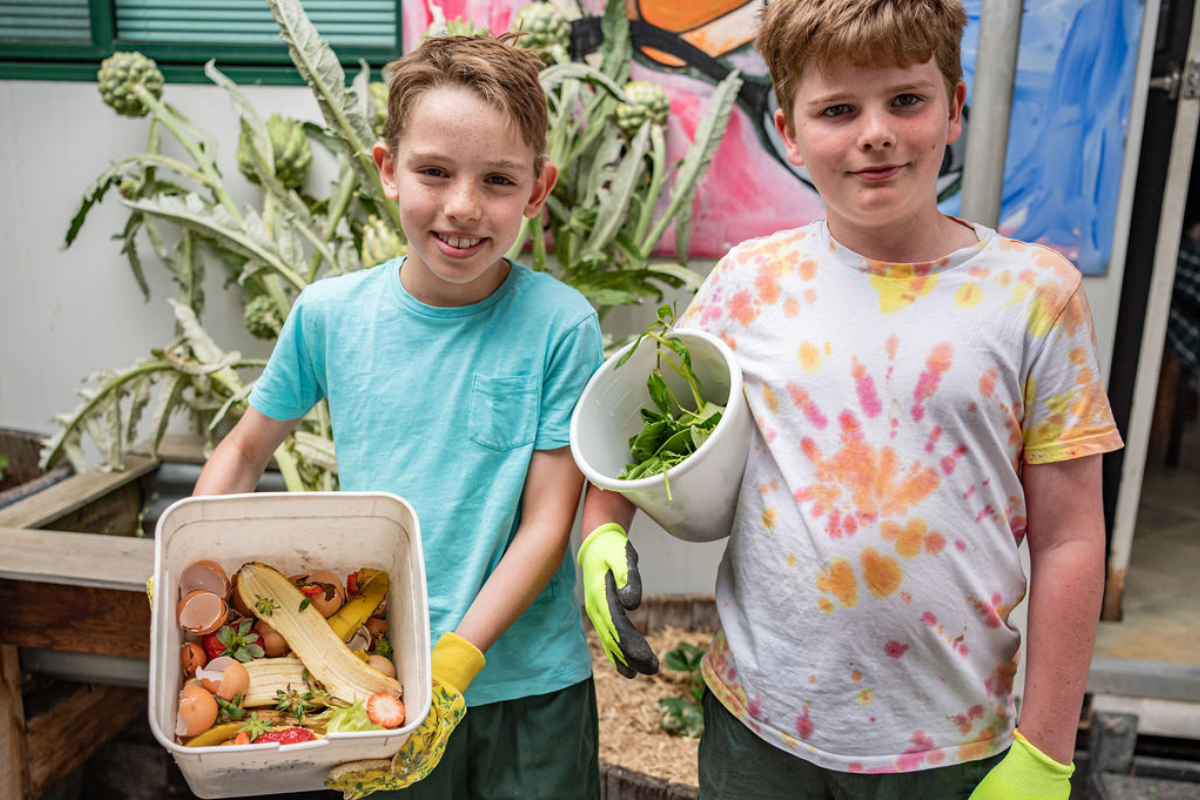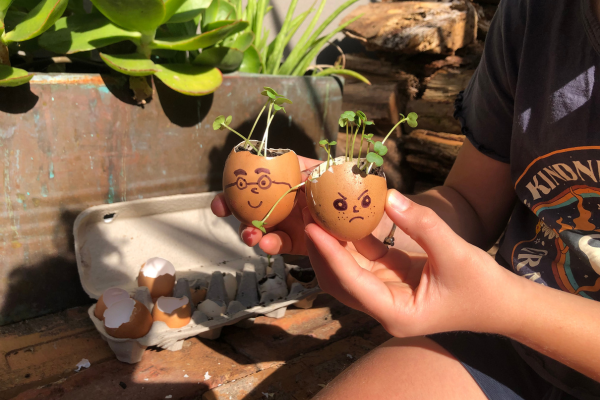SOS: Save our scraps!

Food Waste Action Week is happening across the globe on March 18. We looked at some of Australia’s most commonly thrown-away foods and brainstormed some smart and tasty tips to tackle your food waste at school or home.
Eggs
In the kitchen: When you have an extra load of eggs in the fridge, use them up to make a classic Spanish tortilla loaded with veggies. Other savoury solutions with eggs are fluffy omelettes, basic egg noodles, or a shakshouka flavoured with Northern African or Middle Eastern spices.
For something sweet, make use of egg yolks in a rich, smooth crème anglaise or custard. Combine this vanilla loaded base with seasonal poached fruit or use it as a starting point for home-made ice cream.
In the garden: Eggshells are a really useful resource in the garden and can be used in a lot of beneficial ways, including deterring slugs and boosting soil nutrients. Rather than plastic trays and punnets, use empty eggshells when planting seeds. For smaller shell fragments, dry your empty egg shells in a warm oven for a few minutes. Remove them carefully and crush them with a mortar and pestle until grainy. Sprinkled around young seedlings, the sharp edges of the shell are a deterrent for slugs and snails. As an added bonus, the shells are a source of calcium for the soil.

Salad leaves and herbs
In the kitchen: Before you throw out wilted salad leaves, bring them back to live in some icy water. Pat dry, and use them up in one of our protein-powered smoothie recipes.
If your herbs are abundant, harness their flavours while they’re still in season! Snip and save them in ice cube tray indents drizzled with extra virgin olive oil. Freeze them until you need a hit of herbs in your cooking, then simply pop out a frozen cube and add to soups, stir fries, and a wide range of meals.
Did you know herb stems are packed with intense flavour? Once washed, slice them thinly and add to chutneys, salsa, tortillas or rice paper rolls. Coriander roots pair well with Thai dishes and curries, and a full rosemary sprig can be used in a slow-cooked dishes. Take the stick out at the end and use it as a skewer, or as a bed to cook mushrooms on top — yum!
In the garden: Salad leaves and herbs that have turned brown or soggy can be tossed to the compost pile, worm farm or hungry backyard chooks.
.png)
Bananas
In the kitchen: When your bunch gets spotty, brown or soft and black, turn your over-ripe bananas into a classic banana bread or mini muffins. If you’re short on time to bake, just peel the bananas, portion into bite-size pieces and freeze. You can use the frozen chunks blended with a dash of nut butter and cocoa for one of the best natural ice creams around!
In the garden: Banana peels are a source of potassium, which is needed to produce fruit. When planting heavy fruiters like tomatoes, capsicum and broccoli, some gardeners dig banana peels into the soil before they plant out their seedlings. Alternatively, cut up banana peels and place them in a bucket of water. In a day or so the water will be a rich brown colour, full of nutrients to water on your plants.
Carrots
In the kitchen: Carrot leaves have a parsley and celery-type flavour that is too good to waste! Add the fronds to salads and stir fries or make a delicious carrot-top pesto to stir through pasta dishes or smear on crunchy bread topped with fresh tomatoes and mozzarella. You can download our family recipe booklet for the recipe!
In the garden: Like most kitchen scraps, carrot peels can be thrown into the compost or fed to the worms. Introduce students to composting science with this resource or repurpose a carrot top and watch it grow!
Tomatoes
In the kitchen: Often, tomatoes produce buckets of fruit all at once. Quickly ripening, you’ll need to gather some helping hands and think quick! We have all the recipes to help you use up your excess. These are great for batch cooking and freezing, so you have the taste of summer on hand, any time of year. Choose from a traditional passata di pomodoro, Fijian tomato chutney, tomato and basil soup or a tomato and chilli jam.
In the garden: If you’re particular proud of that taste of your tomatoes this year, be sure to save your seeds so you can enjoy the same flavours, next harvest season. Spoon out the tomato seeds and spread them thinly over a paper towel. Once dry, the seeds can be stored in an air-tight container until the next growing season.
< Back to Latest News

